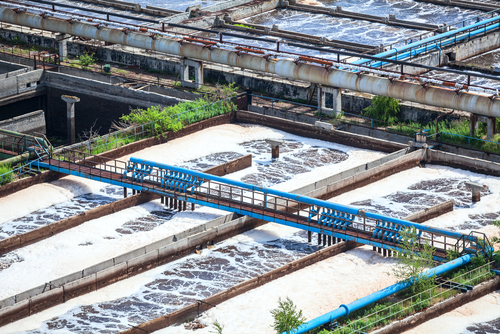Hydraulic Fracturing—5 Things to Know About Risk in Wastewater Recycling
 |
1) Operators need to establish treatment targets. To minimize the risk of choosing the wrong equipment for the job, and gain a performance guarantee, well operators should provide equipment suppliers with both the influent water chemistry and the specific output treatment objectives (as determined in cooperation with the well stimulation company). Due to the diversity and complexity of hydraulic fracturing fluids going into a well and the flowback and produced water coming out, there is no single technology available to handle all the contingencies. Knowing in advance exactly what fluids are composed of in the beginning and what treatment goals must be met at the end can help to eliminate both inadequate treatment and costly overtreatment.
2) Flowback water is preferable to produced water for recycling. About 20 to 50 percent of the injected volume of hydraulic fracturing fluid is recovered during the first few weeks of well production and is known as flowback. Because it is in the ground for much less time then produced water, flowback is much closer in chemical makeup to the initial feed water and can be recycled using fewer treatment technologies generally requiring less cost. It is also important to understand that produced water can vary considerably from play to play and well to well, a reality that would require treatment systems that can handle often significantly different influent water components.
Complimentary Special Report: Minimizing Operator Risks While Implementing A Frac Water Recycling Program
Learn more on balancing the risk of well damage with the economic benefits of wastewater reuse by downloading here!
3) Choose the flowback fluid that is easiest to recycle. Based on current industry practices, there are three primary types of hydraulic fracturing fluids: slickwater, linear gels and cross-linked gels. Although all are generally composed of >95-percent water, the greatest difference between the three is their relative viscosity, which can range from slightly more viscous than salt water to a viscosity that is more like honey. As a rule of thumb, while the more viscous hydraulic fracturing fluids can transport a greater amount of proppant, this greater viscosity also requires more complex chemical formulations. So the fewer chemicals added, the less treatment is required, making slickwater the most cost-effect and lowest risk fluid to initiate a wastewater recycling program.
How would you like a complimentary report on minimizing your operator risks all while implementing a frac water recycling program? Click here for to download now.
4) Choose pit-treatment technologies over in-line treatment technologies. Of the two approaches, pit treatment offers the least risk of insufficient fracturing or proppant screen-out during the hydraulic fracturing operation. Unlike in-line treatment, pit treatment provides the opportunity to measure the water chemistry in advance to assess its compatibility with the intended hydraulic fracturing fluid as well as with the formation being drilled.
5) Keep in mind what the treatment technology can and cannot accomplish. For example, while the pit treatment of slickwater can save plenty over the costs of freshwater sourcing, transportation and wastewater disposal, the resulting water must still meet several requirements:
- Confirmation by the well stimulation company that hydraulic fluid additives will work with the recycled water, and
- That the targeted contaminants have been removed, mitigating potential well problems, including:
- Total suspended solids (TSS),
- Free and dispersed oil and grease,
- Scaling ions and heavy metals, and
- Bacteria.
